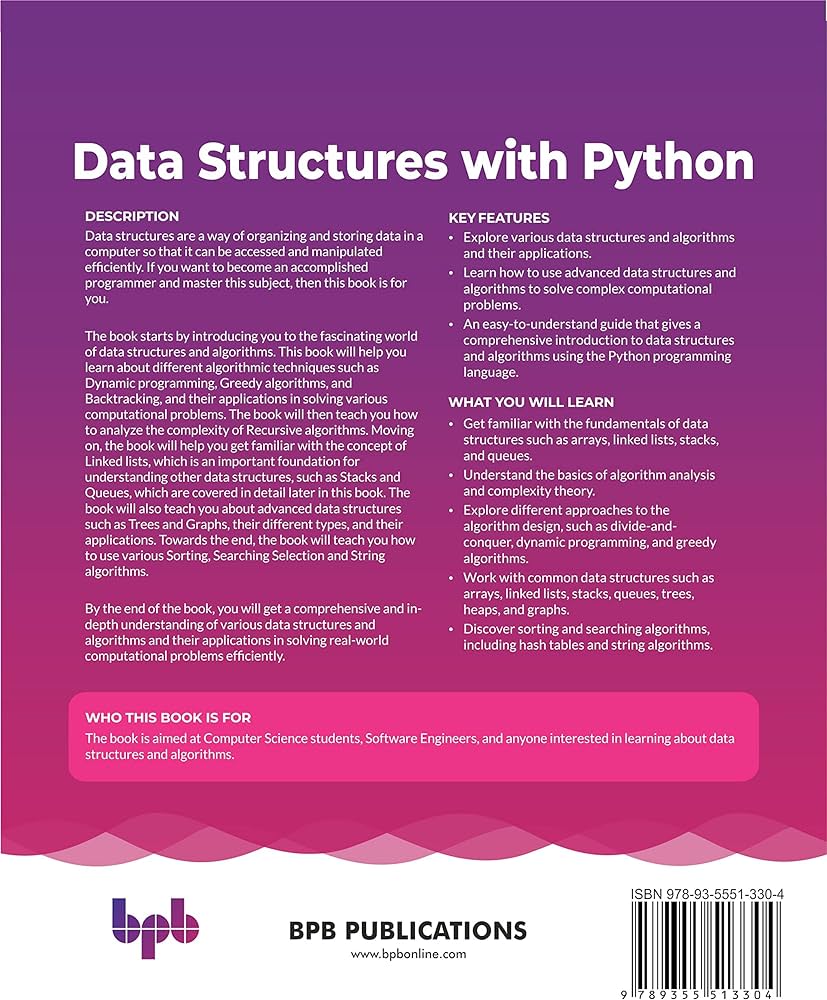Data structures and algorithms are essential concepts in programming that help optimize and improve the efficiency of solutions to computational problems. Data structures, such as arrays, linked lists, and trees, organize and manage data in a computer’s memory. Algorithms, on the other hand, are step-by-step procedures used to solve specific problems by combining data structures and logical reasoning. By understanding the strengths and weaknesses of different data structures and algorithms, programmers can make informed decisions that optimize memory usage, reduce execution time, and enhance overall performance. Learning and practicing these concepts are valuable for any programmer aiming to write efficient and elegant code.
Exploring Data Structures and Algorithms: A Beginner’s Guide to Efficient Programming
Introduction
Data structures and algorithms are fundamental concepts in the world of programming. They serve as the building blocks for creating efficient and optimized solutions to various computational problems. Whether you are a beginner or an experienced programmer, having a strong understanding of data structures and algorithms can greatly improve your problem-solving skills and make you a more efficient programmer.
What are Data Structures?
In simple terms, data structures are the containers that hold, organize, and manage data in a computer’s memory. They dictate how the data is stored and accessed, and the efficiency of these operations can have a significant impact on the overall performance of a program. Common examples of data structures include arrays, linked lists, stacks, queues, trees, and graphs.
Why are Data Structures Important?
Efficiently choosing and utilizing data structures is crucial in software development. Using the appropriate data structure for a specific problem can greatly improve the efficiency of operations like searching, insertion, deletion, and sorting. By understanding the strengths and weaknesses of different data structures, programmers can make informed decisions and design algorithms that optimize memory usage, reduce execution time, and enhance overall performance.
What are Algorithms?
Algorithms are step-by-step procedures or processes designed to solve specific problems. They combine various data structures, mathematical calculations, and logical reasoning to achieve a desired outcome. Algorithms can be as simple as sorting a list of numbers or as complex as navigating through vast networks. Regardless of their complexity, algorithms are essential tools for solving problems in an efficient and systematic manner.
Why are Algorithms Important?
Developing efficient algorithms is crucial in writing software that performs well. In many cases, the difference between an efficient program and an inefficient one lies in the algorithm used. Properly optimized algorithms can significantly reduce processing time, minimize resource usage, and improve the overall user experience. Additionally, algorithms are reusable, meaning they can be applied to different datasets or scenarios, making them invaluable in various domains like machine learning, cryptography, and database management.
Common Data Structures and Algorithms
Arrays
Arrays are one of the simplest and most fundamental data structures. They store a fixed-size sequence of elements of the same type. Arrays provide constant-time access to individual elements, but inserting or removing elements at arbitrary positions can be slow, requiring shifting of elements. Arrays are commonly used when the number of elements is known in advance, and efficient random access is required.
Linked Lists
Linked lists are dynamic data structures that consist of nodes, where each node contains data and a reference to the next node. Unlike arrays, linked lists provide efficient insertion and deletion at any position, but accessing a specific element requires traversing the list from the beginning. Linked lists are useful when frequent modifications to the data structure are expected, or when there is a possibility of a varying number of elements.
Stacks
Stacks implement a Last-In-First-Out (LIFO) policy, meaning the element pushed last is the first to be popped. Stacks can be implemented using arrays or linked lists. They are commonly used to implement functions calls, undo operations, parenthesis matching, and more. The time complexity of the basic stack operations is constant, making them efficient for managing temporary data.
Queues
Queues, in contrast to stacks, follow First-In-First-Out (FIFO) order. The element that is enqueued first is the first to be dequeued. Similar to stacks, queues can be implemented using arrays or linked lists. Queue operations are also constant time, making them helpful in scenarios like scheduling, network packet management, or process management.
Trees
Trees are hierarchical data structures consisting of nodes connected by edges or branches. They are used to represent relationships between objects, like family trees, file systems, or organization hierarchies. Trees come in various forms, such as binary trees, balanced trees (e.g., AVL trees, red-black trees), and B-trees. Efficient tree operations allow for fast searching, insertion, and deletion, making trees valuable in many applications.
Graphs
Graphs are versatile data structures used to represent connections between entities. They consist of vertices/nodes connected by edges/links. Graphs can be directed (edges have a specific direction) or undirected, and they can be cyclic or acyclic. Graphs are extensively used in social networks, maps, recommendation systems, and many other domains. Efficient graph algorithms, such as breadth-first search and depth-first search, enable efficient traversal and pathfinding.
Conclusion
Data structures and algorithms are foundational concepts for effective programming. They provide the tools and techniques necessary to design efficient, maintainable, and scalable solutions to a wide range of computational problems. By understanding various data structures and algorithms, programmers can optimize their code, reduce complexity, and improve the overall performance of their software. Investing time in learning and practicing these concepts is undoubtedly valuable for any programmer aiming to write efficient and elegant code.
